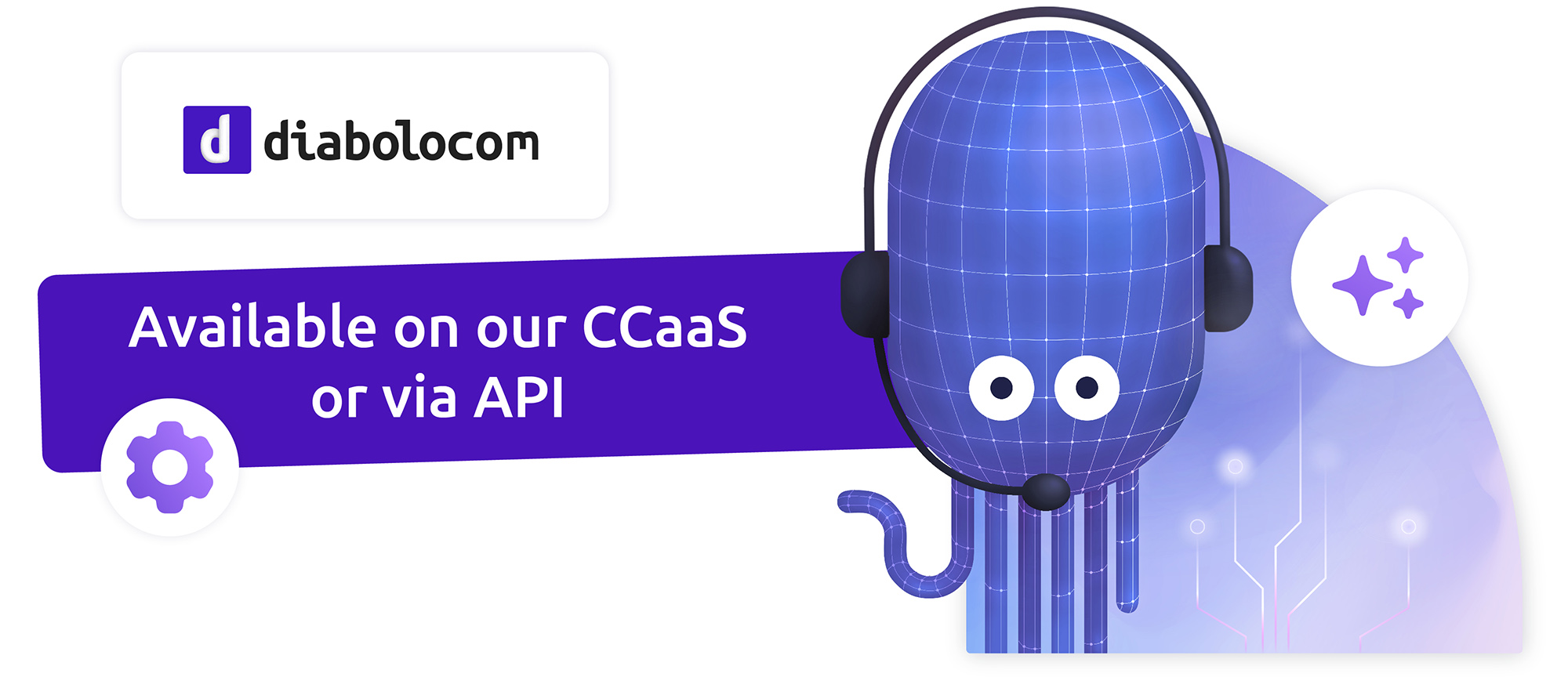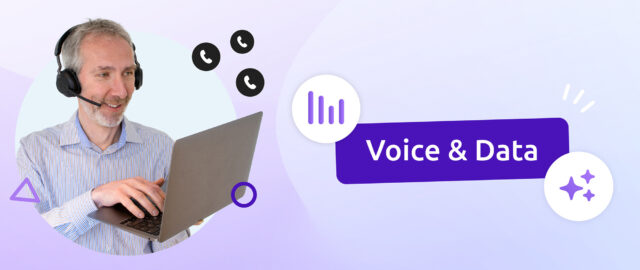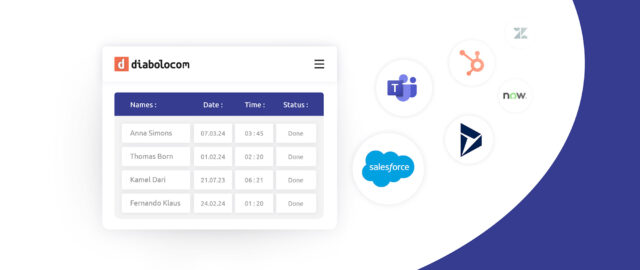Voice data, a valuable mine of information for improving the customer experience
Voice data refers to all the useful information that can be extracted from telephone exchanges with prospects and customers. The activity of a contact center or customer service department generates a very large amount of voice data, which can be used to improve customer service and the customer experience.
When we talk about voice data, we’re talking about telephone conversations with your prospects and customers as sources of information and insight – whether they’re outgoing or incoming calls.
The importance of voice data lies in its ability to directly reveal customer expectations and needs, without the filter of written or digital interactions. Every phone call is an opportunity to capture not only the explicit content of the customer’s request, but also the emotional and contextual subtleties that accompany it. This wealth of information enables a finer understanding and a more tailored response to customers’ real needs.
A better understanding of customers’ needs, expectations, challenges, pain and friction will in turn enable us to identify areas for improving the customer experience.
Voice data can also be used to anticipate customer needs, for example, by identifying recurring questions, frequent requests and regular reasons for contact.
The real challenge for companies is to capture, analyze and exploit this voice data to extract actionable insights.
The challenges of voice data analysis
Personalized dialogue is based on knowledge of prospects and customers. It’s a well-known rule that applies equally to marketing, sales and customer service. Customer knowledge is the prerequisite for personalization.

Customer knowledge is the product of analyzing a variety of data, including :
- Socio-demographic data: age, gender, geographical location…
- Transactional data, i.e. the customer’s transaction history, products purchased, amounts spent, etc.
- Data from customer service interactions.
- Web browsing data, such as the pages visited by the customer.
- Campaign data, which tracks customer engagement with emails, advertisements and promotions.
- Data from satisfaction surveys.
All this data can be aggregated to provide a 360° view of the prospect and customer, enabling personalized marketing-sales actions, customer service exchanges…
As we mentioned in our introduction, voice data has long been neglected and under-exploited. Even today, many companies are still missing out on a significant amount of information from telephone conversations.
For a simple reason: extracting and analyzing data from voice channels raises a number of challenges. Voice conversations do not lend themselves easily to structured analysis without advanced processing based on advanced natural language recognition and processing (NLR) systems.
The main challenges are:
- Speech variability: Human speech varies greatly from person to person, due to accents, dialects, speech rate or emotional state. This variability presents a challenge for speech recognition systems, which need to understand and accurately transcribe a wide range of speech inputs.
- Context and semantics: Understanding the context in which certain words or phrases are used is crucial to the correct interpretation of speech data. Nuances of language, idioms and industry-specific language can complicate analysis, requiring sophisticated natural language processing (NLP) models.
- Background noise and recording quality: Telephone calls are often affected by background noise or poor sound quality, hampering speech recognition and analysis. The technology must be able to filter out these disturbances to capture the caller’s voice clearly.
- Data integration: Merging voice data with other information sources, such as data from digital channels or CRM databases, represents a challenge in terms of compatibility and data management. This requires technological solutions capable of consolidating and analyzing heterogeneous data to obtain a complete view of the customer.
- Privacy and regulatory compliance: The recording and analysis of telephone conversations must comply with data protection laws. Companies must ensure that their voice data practices comply with current regulations, which adds a layer of complexity to their operations.
The good news is that technological advances are now largely solving the challenges that have long prevented the use of data from telephone conversations.
Voice data analysis in the age of natural language processing technologies
The advent of natural language processing (NLP) technologies has revolutionized companies’ ability to exploit voice data. These technological advances make it possible to do what was difficult to do in the past: transform telephone conversations into analyzable, actionable data.
Here are the main use cases for natural language processing technologies to analyze voice data:
- Transcription (Speech to Text): Automatic call transcription is the foundation of speech data analysis. Thanks to NLP and advanced speech recognition, systems can now convert speech into text with high accuracy, even under less than ideal conditions. This enables quantitative and qualitative analysis of conversations, and makes data finally accessible for further analysis.
- Sentiment analysis: NLP tools can assess the tone and emotion behind words. Sentiment analysis helps companies understand not only what customers are saying, but also how they are feeling.

- Key information extraction: NLP technologies can automatically identify and extract important information from conversations, such as product names or specific problems mentioned. This capability enables downstream call triage and better resource allocation.
- Automatic call categorization: By analyzing the content of conversations, NLP systems can classify calls into predefined categories, enabling responses to be organized and prioritized. The result is greater operational efficiency: calls are routed to the most appropriate agents or departments.
- Call summaries with AI: Artificial intelligence can generate call summaries, capturing key points and identifying next actions. This ensures that you don’t miss any information and avoid misinterpretation.
The use of voice analysis technologies offers a glimpse into the realm of possibilities available today. Moving forward, analyzing voice data can turn every customer interaction into a chance for learning and enhancement. Diabolocom’s contact center management software equips you with the tools necessary to harness the power of voice data effectively.
Tips for harnessing voice data
Here are a few useful tips if you’re thinking of exploiting voice data from telephone exchanges with your prospects and customers:
Prioritize recording quality
The accuracy of the analysis depends closely on the quality of the recording of the telephone exchanges. We recommend investing in a high-quality solution. This will ensure that the voice data captured is clear and usable by the analysis tools. As a telecom operator, Diabolocom offers professional cloud telephony solutions that meet this requirement.
Invest in the right software
You need to select call management software incorporating natural language processing and artificial intelligence technologies. Our Diabolocom software enables you to implement the applications described above: call and voicemail transcriptions, call summary generation, sentiment analysis and detection of signs of customer irritation, call categorization…
Train your teams
The effective use of voice data largely depends on your teams’ ability to interpret the extracted information correctly. We advise you to organize regular training sessions for your teams, so that they know how to make the best use of data from customer conversations.
Respect confidentiality and regulations
Ensure that all voice data recording and analysis practices comply with local and international privacy and data protection laws. In France and Europe, the General Data Protection Regulation (GDPR) applies. It requires companies to collect explicit consent from customers for the recording of their voices and the use of their data.
Beyond voice data: integration with other types of data
Voice data is becoming an important component of prospect and customer knowledge. The challenge is to successfully combine this voice data with other prospect and customer data.
Voice data, while essential, only provides part of the story. To get a 360-degree view of the customer, agents need access to other data, such as purchase histories, social network interactions, engagement with marketing campaigns, demographics…
It is the combination and consolidation of all this information that enables advanced personalization of interactions and more relevant customer service.
Data consolidation requires the integration of all data. In this respect, Diabolocom’s contact center management platform offers multiple integrations, notably with the main CRM solutions on the market: Salesforce, Microsoft Dynamics, Oracle, Zendesk. We also provide an API for connecting your other data sources.

Conclusion
Data and voice go hand in hand! New voice-analysis technologies are boosting companies’ ability to enhance their knowledge of their prospects and customers. Natural language processing systems and artificial intelligence can transform the magma of telephone conversations into structured information that can be exploited by contact center agents.
A loop is thus created: the customer’s voice is a source of data – data which can then be used to improve the agents’ voice. The relationship between voice and data is reciprocal.
Diabolocom supports organizations in this advanced integration of voice data for a better customer experience.
Curious to know more about Diabolocom?




